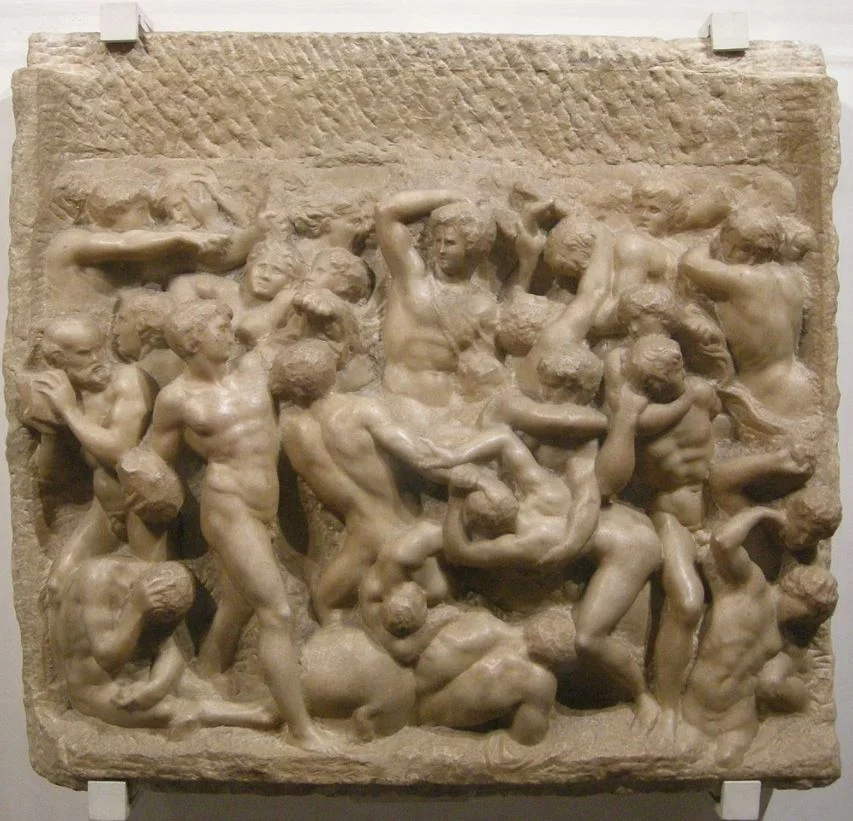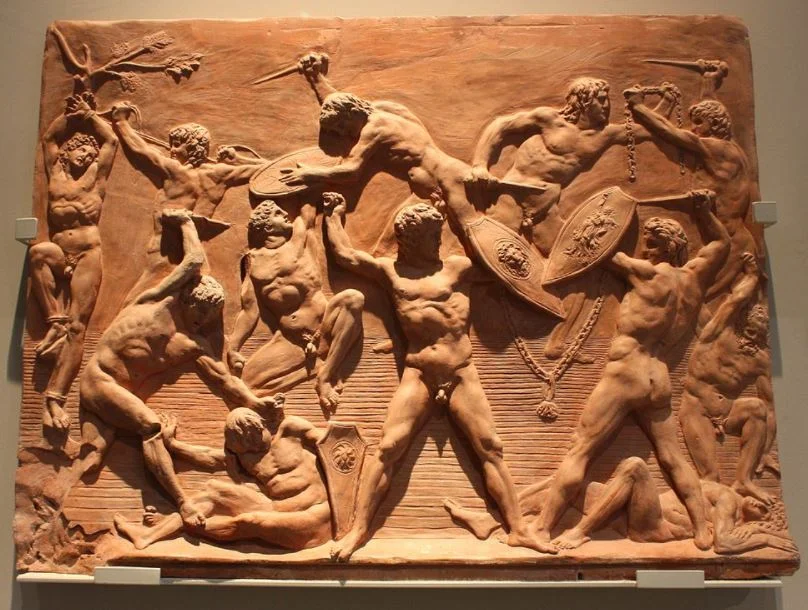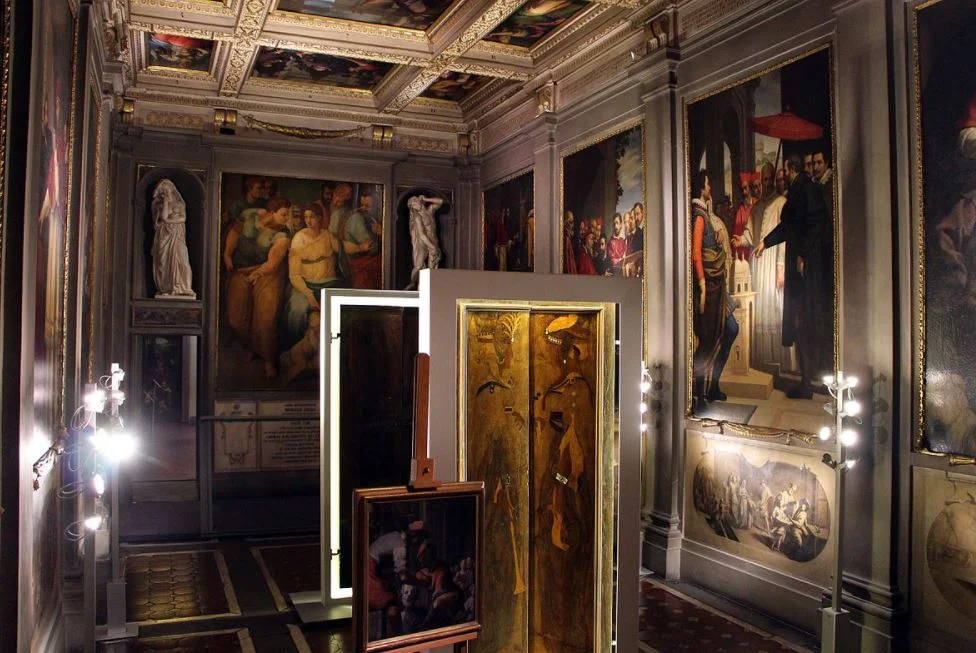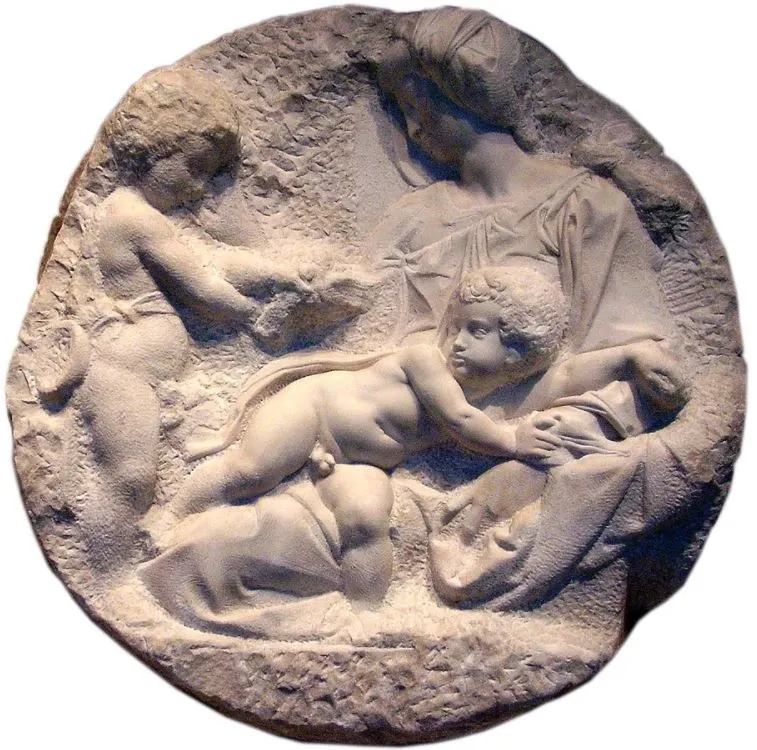Some works of art define an artist’s later career. In the case of Michelangelo, it’s a relief sculpture that he held on to for the rest of his life as a visual reminder of why he needed to pursue sculpture, even though he was a polymath in the truest sense.
Let’s take a closer look at a relief named Battle of the Centaurs by Michelangelo, one of the most remarkable Renaissance artworks in the artist’s oeuvre for several reasons.
1. It was sculpted when Michelangelo was still in his teens
One of the most renowned artists of the Renaissance period was a man who was so talented that he could literally pursue any objective and achieve greatness.
Even though he created magnificent paintings, wrote poetry, and designed magnificent buildings as the lead architect, his main passion throughout his life remained sculpture.
One of the reasons was his extreme satisfaction with a relief he created at the age of 17 known as the “Battle of the Centaurs.” Michelangelo was born on March 6, 1475, and stopped working on this work in 1492.
This was the final work during his apprenticeship for his patron Lorenzo de Medici (1449-1492), the de facto ruler of the Florentine Republic at the time who died shortly after.

2. It’s unclear whether or not he left the relief unfinished on purpose
Even though he stopped working on this relief in 1492, he didn’t complete it. This means that the work is described as being created in the “non finito” sculpting technique.
Non finito literally translates to “not finished” and that’s exactly what he did. Only part of the block is sculpted. It remains unclear to this day whether this was done on purpose or not.
The general sentiment regarding this notion is that he left it uncompleted on purpose, mainly for these two reasons:
- He had plenty of time to finish the work.
- He kept onto this relief for the rest of his life, even though he abandoned multiple of his works during his lifetime.

3. It depicts a battle from a popular story in Greek Mythology

So what is the Battle of the Centaurs about?
The relief depicts a battle between the Lapiths and the Centaurs. According to the myth, this battle emerged during the wedding of Pirithous, the King of the Lapiths, to Hippodamia.
The Centaurs were invited to this wedding but tried to steal Hippodamia after she greeted them. This resulted in an immediate battle which is described as a “symbolic” battle between chaos and order, referring to the clash of the civilized Greeks and the “Barbarian” Persians.
This story was very popular in ancient Greek sculpture and reliefs depicting this battle can even be found on the Parthenon in Athens, the Temple of Hephaestus, and the Temple of Zeus at Olympia.

4. Michelangelo was inspired by a similar work depicting an ancient battle
One of the most remarkable facts about this relief is that it wasn’t commissioned by his patron Lorenzo de Medici but a work that he created to improve his sculpting technique.
One of his biggest inspirations for this work was a bronze relief that then hung in the Palazzo Medici. This work is known as “Equestrian Battle in the Ancient Manner” or simply “Battle” and was created by Bertoldo di Giovanni.
Bertoldo, in turn, was inspired by an engraving created around 1470 known as “Battle of the Nudes” by Antonio del Pollaiolo.

5. The relief is on display in a house the artist once owned
The artist kept onto this work for the rest of his life as he considered it to be one of his best works from the early years of his career.
He loved this work so much that he once told his biographer that he even regretted pursuing other things other than sculpture whenever he looked at this relief. It must have left quite an impression on the young artist, don’t you think?
The work never left his personal collection and eventually ended up in one of the 5 houses that he once owned in Florence, Italy.
This house is now known as “Casa Buonarroti” and was eventually transformed into a museum that displays the works that remained in the collection of the artist’s heirs after his death.

More facts about Battle of the Centaurs by Michelangelo
6. Even though the work was left unfinished, Michelangelo was always very proud of it for the remainder of his life. It was the first work he created using a chisel instead of a bow drill and the chisel marks can still be seen at the bottom of the relief.
7. The young artist preferred to work in marble because he wanted to save money. The alternative, bronze, was much more expensive to work with.
8. It’s pretty certain that he intentionally left the work unfinished because it’s considered to be the predecessor of multiple similar works in the “non finito” sculpture technique. The other ones being reliefs known as “Taddei Tondo” and “Pitti Tondo.”

9. The Battle of the Centaurs didn’t just have symbolic meaning for the ancient Greeks who saw it as a triumph of Greek civilization over Persian barbarians. It had a deeper meaning for Michelangelo as well.
He considered this work to be a triumph of “stone over flesh.” He made this link because the figures both use stones during the battle, and the fact that “Lapiths” resembles the Latin word for stone “Lapis,” and the Italian word for “stone plaque,” namely “lapide.”

10. The work is considered to be a clear departure from the work of the early Renaissance sculptors such as Lorenzo Ghiberti and Donatello. He seems to have sculpted this remarkable work freely, without constraints, and say from the traditional norms of his predecessors.
He created the figures dynamically with twisting bodies and limbs. This set the tone for his future works which makes this particular relief one of the most important works of his career. This is most probably the main reason why he held onto it for his entire life as well.

